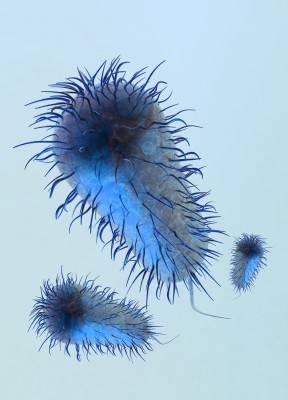Many biomedical industries that need to inhibit the spread of disease through communal use of materials seek FluoroPlate® antimicrobial (AM) coatings. The efficiency of FluoroPlate® AM industrial coatings in killing pathogens has been stringently tested in laboratories, which has led to confirmed pathogen kill rates of 99%. This specialized antimicrobial coating has been effectively proven to kill numerous types of bacteria, and thus deserves its title as an advanced industrial coating technology. But how exactly is FluoroPlate® Antimicrobial coating made?
Understand why the antimicrobial coating kills bacteria
The surface of the FluoroPlate® industrial coating contains silver oxide ions that attack various sites within the pathogenic cell, preventing its reproduction functions. These silver ions contain negatively charged side groups that bind to the pathogen’s DNA, hindering its replication and metabolic functions. This inability to reproduce kills the microorganism. A fortunate advantage to this antimicrobial silver oxide is that it is known for having extremely low human toxicity, which is why it is not a health-hazardous non-stick coating for various materials requiring this property.
Making of FluoroPlate® antimicrobial coating
As we mentioned before, those special antimicrobial silver oxide ions are crucial in killing bacteria. Glass particles containing selected metals that birth antimicrobial silver oxide ions in the presence of moisture are stringently formulated and worked into the coating. The reason that glass particles are used in making this coating is because glass contains the chemical makeup that is necessary to retain metal ions, and those silver oxide ions are what gives FluoroPlate® AM coating its bacteria-beating strength.
Inorganic materials are used in the formulation of FluoroPlate® AM to boost longevity of the coating, as well as enhanced safety, because of its exceptional heat-resistant ability demonstrated in temperatures of up to 500° F. This is why non-stick coating for consumer-product use can be modified to have these FluoroPlate® antimicrobial properties without compromising the health in the human body. Many liquid industrial coating services can be modified to include these antimicrobial properties, leading to a bevy of safer products that are created using this coating. An extensive range of non-stick and low-friction coating products can be produced with FluoroPlate® AM, opening up a world of bio-medically safe product options.
Because the antimicrobial silver ions contain such a bacterial-resistant influence, it is almost impossible for the bacterial organisms to develop resistance against it. Fortunately, the antimicrobial properties on the surface of the industrial coating are extremely effective and permanently sealed, even after years of cleaning.
Now that you understand how FluoroPlate® antimicrobial coating is made, it’s time to explore the available products that are formulated with this coating. Contact us to discuss your project with a technical consultant or complete our Engineering Evaluation form.
